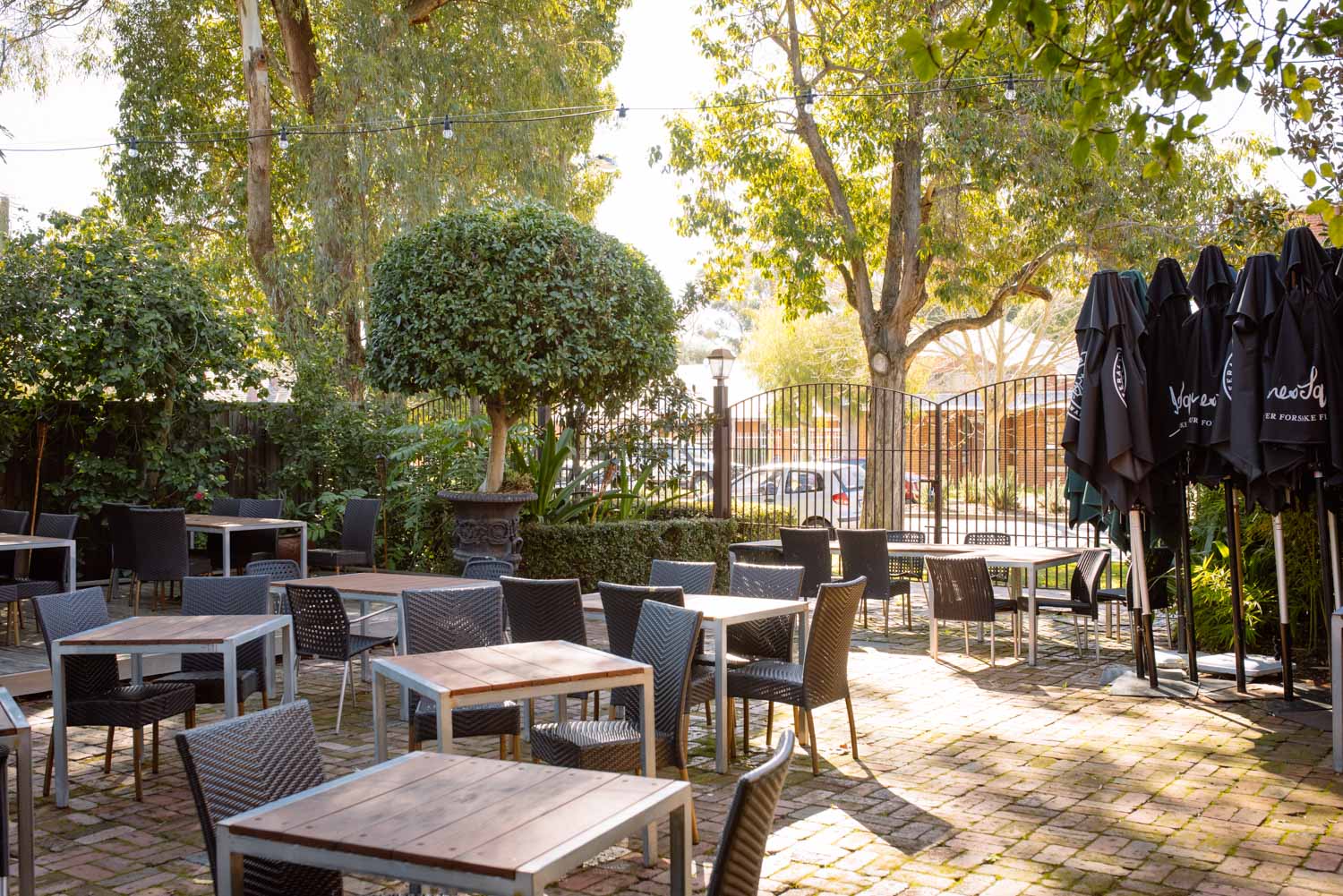The heritage-listed Rose & Crown is the oldest hotel in the state and the third oldest licensed hotel in Australia. In 1839, when the colony of Western Australia was little more than a decade old, Thomas Jecks opened a general store in Guildford.
Soon after, in 1841, he extended the scope of that business to include a licensed inn. The main building – known as the Rose & Crown Inn – is Georgian in style. It was built from local, hand-made bricks laid in a Flemish bond, while the steeply pitched roof, constructed from indigenous and English hardwoods, was formerly covered in timber shingles. The most recent restoration of the Rose & Crown by Mark and Tracy Weber, owners since 2004, showcases many of the original details.
The beams are herringbone strutted, held in position with hand made nails, rather like the old fashioned horseshoe nails
Opened in 1841 as a licensed hotel, the main two-storey Rose & Crown building sits on approximately 2.5 acres of land in tree-lined Swan Street, Guildford. The hotel is basically symmetrical in plan, with a corridor running through the middle on the ground and first floors. The one original ground-floor room that remains virtually intact is the 1841 Dining Room; the other was divided into a foyer area and private dining room. On the first floor (originally the manager’s residence), four Heritage Suites line either side of the central corridor. Fully renovated, with a classical theme, they incorporate all modern facilities.
There are extensive cellars below the hotel. In one, a well was sunk through the floor. Originally, a tunnel from the main cellar to the shores of the nearby Swan River facilitated the movement of stores from barges into the building, and to this day stories relating to the tunnel abound. Magnificent beams – measuring a sizeable 20 cm by 5 cm and believed to be of English redwood – support part of the hotel floor, as well as a section of the restaurant. Herringbone-strutted, they are held in position with hand-made nails that resemble old-fashioned horseshoe nails. Mystery surrounds an inscription dated 1837 on one of these cellar beams.













